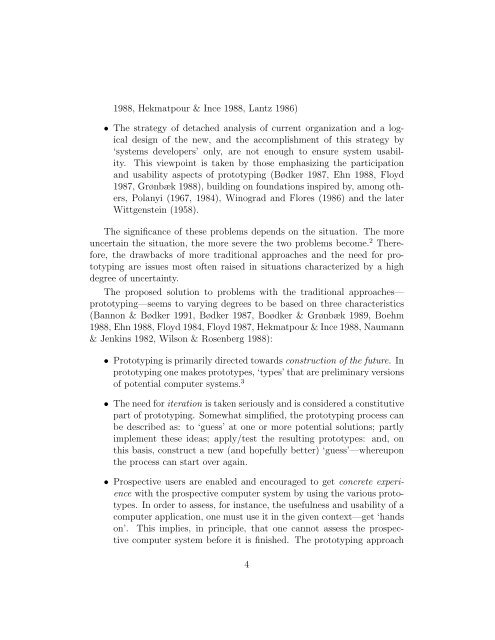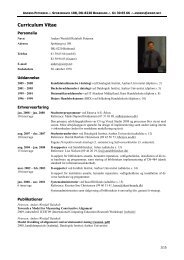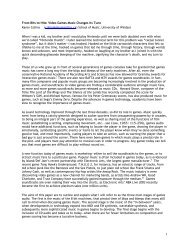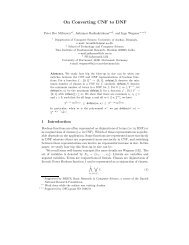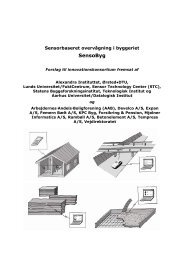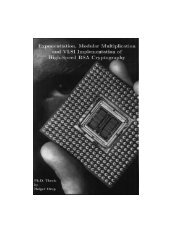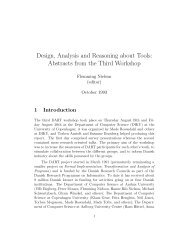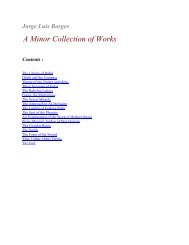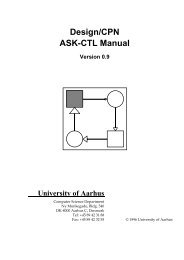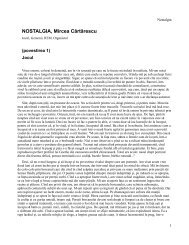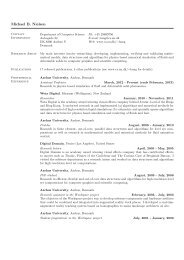towards a provotyping approach in systems development
towards a provotyping approach in systems development
towards a provotyping approach in systems development
You also want an ePaper? Increase the reach of your titles
YUMPU automatically turns print PDFs into web optimized ePapers that Google loves.
1988, Hekmatpour & Ince 1988, Lantz 1986)<br />
• The strategy of detached analysis of current organization and a logical<br />
design of the new, and the accomplishment of this strategy by<br />
‘<strong>systems</strong> developers’ only, are not enough to ensure system usability.<br />
This viewpo<strong>in</strong>t is taken by those emphasiz<strong>in</strong>g the participation<br />
and usability aspects of prototyp<strong>in</strong>g (Bødker 1987, Ehn 1988, Floyd<br />
1987, Grønbæk 1988), build<strong>in</strong>g on foundations <strong>in</strong>spired by, among others,<br />
Polanyi (1967, 1984), W<strong>in</strong>ograd and Flores (1986) and the later<br />
Wittgenste<strong>in</strong> (1958).<br />
The significance of these problems depends on the situation. The more<br />
uncerta<strong>in</strong> the situation, the more severe the two problems become. 2 Therefore,<br />
the drawbacks of more traditional <strong>approach</strong>es and the need for prototyp<strong>in</strong>g<br />
are issues most often raised <strong>in</strong> situations characterized by a high<br />
degree of uncerta<strong>in</strong>ty.<br />
The proposed solution to problems with the traditional <strong>approach</strong>es—<br />
prototyp<strong>in</strong>g—seems to vary<strong>in</strong>g degrees to be based on three characteristics<br />
(Bannon & Bødker 1991, Bødker 1987, Boødker & Grønbæk 1989, Boehm<br />
1988, Ehn 1988, Floyd 1984, Floyd 1987, Hekmatpour & Ince 1988, Naumann<br />
& Jenk<strong>in</strong>s 1982, Wilson & Rosenberg 1988):<br />
• Prototyp<strong>in</strong>g is primarily directed <strong>towards</strong> construction of the future. In<br />
prototyp<strong>in</strong>g one makes prototypes, ‘types’ that are prelim<strong>in</strong>ary versions<br />
of potential computer <strong>systems</strong>. 3<br />
• The need for iteration is taken seriously and is considered a constitutive<br />
part of prototyp<strong>in</strong>g. Somewhat simplified, the prototyp<strong>in</strong>g process can<br />
be described as: to ‘guess’ at one or more potential solutions; partly<br />
implement these ideas; apply/test the result<strong>in</strong>g prototypes: and, on<br />
this basis, construct a new (and hopefully better) ‘guess’—whereupon<br />
the process can start over aga<strong>in</strong>.<br />
• Prospective users are enabled and encouraged to get concrete experience<br />
with the prospective computer system by us<strong>in</strong>g the various prototypes.<br />
In order to assess, for <strong>in</strong>stance, the usefulness and usability of a<br />
computer application, one must use it <strong>in</strong> the given context—get ‘hands<br />
on’. This implies, <strong>in</strong> pr<strong>in</strong>ciple, that one cannot assess the prospective<br />
computer system before it is f<strong>in</strong>ished. The prototyp<strong>in</strong>g <strong>approach</strong><br />
4


